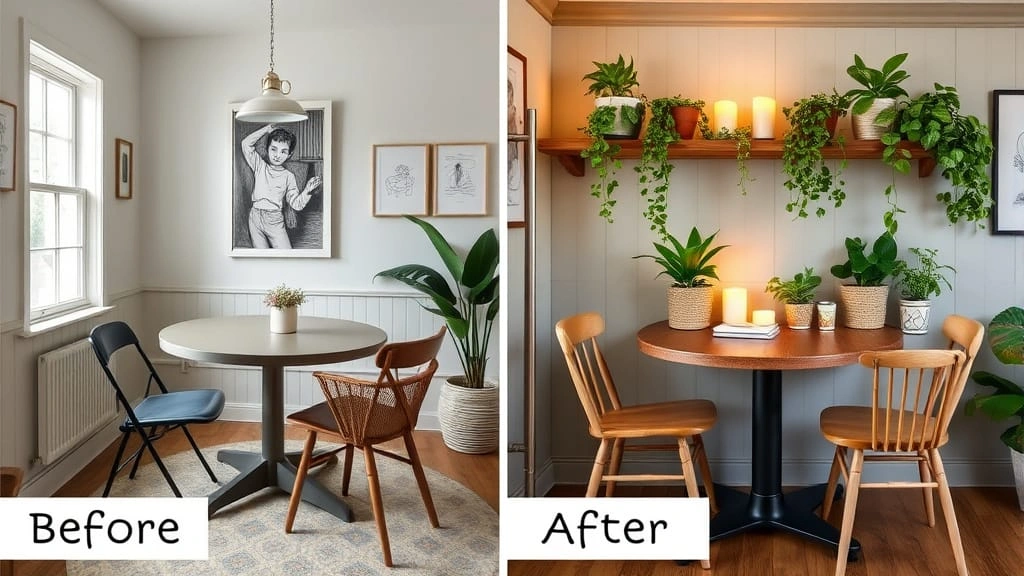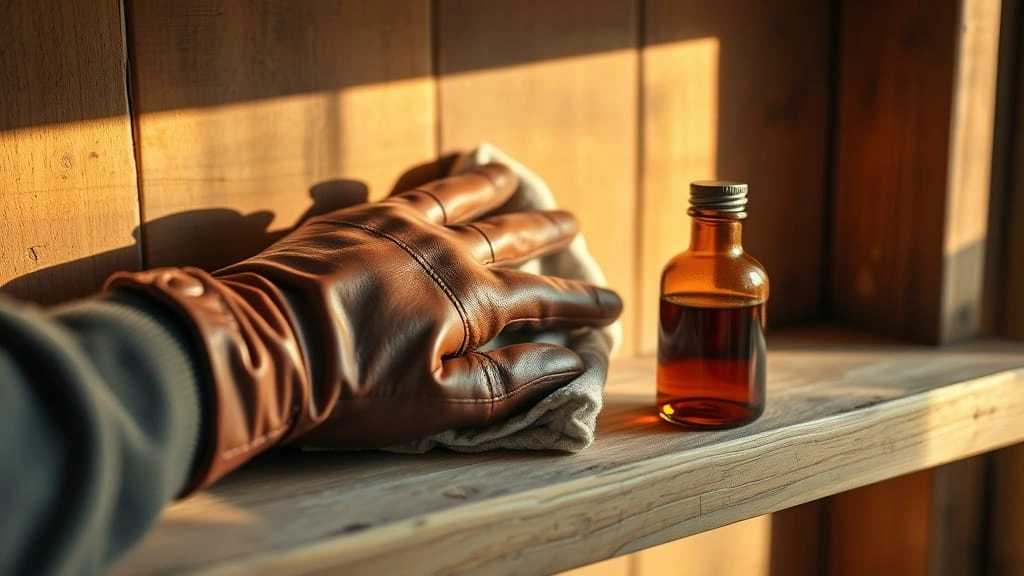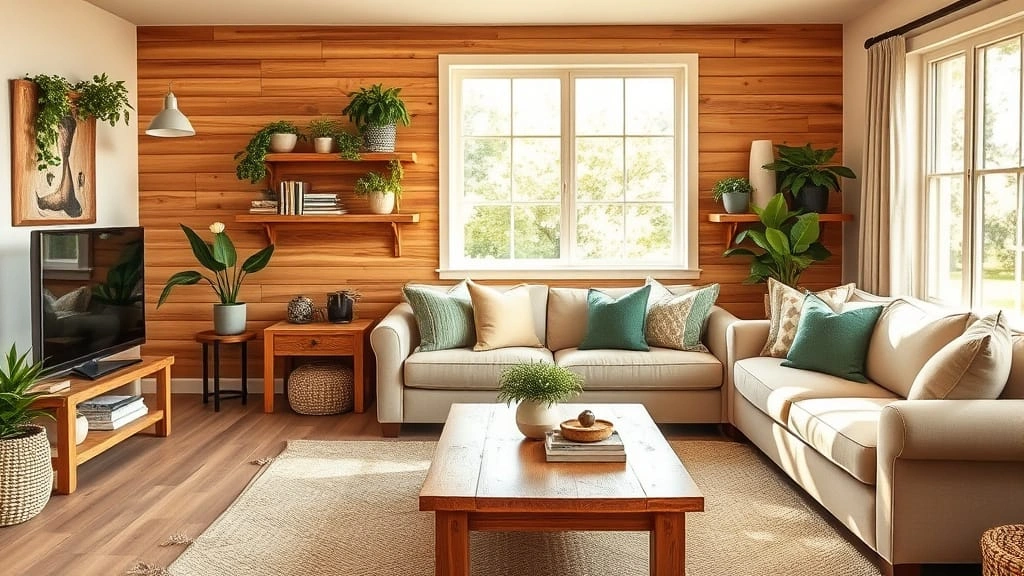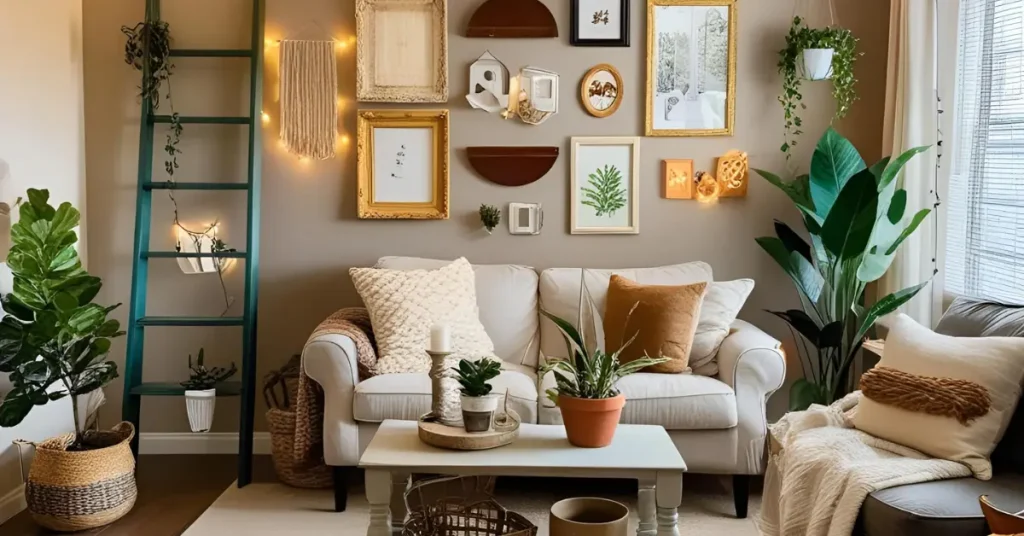I never knew how much wood home decor could change a space—until I tried it. It made my home feel warm, calm, and real. I started small with a few shelves and a table made of natural wood, and the vibe totally shifted. Over time, I’ve picked up easy tips and tricks for using wood decor that feels both fresh and timeless. In this post, I’ll share what worked, what didn’t, and how you can use home decor wood to make your space feel more like you.
Table of Contents
What is Wood Home Decor and Why is It So Popular?

Wood home decor is all about adding warmth and texture to your space using real or crafted wood pieces. Think shelves, tables, wall panels, or even small touches like trays and candle holders. It stands out from plastic or metal because it feels natural, earthy, and real. The grain, color, and even the knots in wood tell a story—and that’s what gives it soul.
Many people today want spaces that feel calm, grounded, and cozy. That’s where natural wood home decoration shines. Its soft tones and raw textures bring a sense of peace you can’t get from cold or glossy materials. Whether it’s light oak or deep walnut, wood pairs well with almost any style—from modern to farmhouse.
I still remember when I replaced my metal shelves with wooden ones. Suddenly, the room felt warmer—more “me.” It didn’t just look better. It felt better. That one swap made me realize how powerful even small wood touches can be.
Another reason why wood decor is trending? It’s kind to the planet. Many wooden pieces are made from reclaimed or sustainably sourced wood. Unlike plastic, wood can be reused, restored, and even passed down. Choosing home decoration wooden items is a simple way to reduce waste and create a timeless look.
So, why is wood decoration home such a big deal now? Because it’s beautiful, sustainable, and makes a space feel alive. It’s not just decor—it’s comfort you can see and feel.
Types of Wood Used in Home Decoration

When it comes to wood home decor, the type of wood you choose makes a big difference. Softwoods like pine and cedar are light, easy to shape, and budget-friendly. Hardwoods like oak, teak, and walnut are stronger, richer in tone, and built to last. Each one brings a different mood to your space.
Softwoods are great for casual or rustic looks, while hardwoods offer strength and elegance for long-term style.
Oak is a classic—tough and timeless. Pine is softer, with a fresh, clean feel. Teak handles moisture well, which makes it ideal for bathrooms. And walnuts? It’s deep, dark, and dramatic. I’ve found it’s perfect for adding depth to neutral spaces.
Want to pick the right wood? Think about the room’s purpose. Use teak for humid areas, oak or walnut for daily wear, and pine where you want softness and charm.
When I updated my living room, I chose a chunky oak coffee table. It looked amazing—but the finish scratched fast because I didn’t seal it well. Later, I added a pine shelf above the sofa. Lighter, softer, but perfect for plants and pictures. Lesson learned: match the wood to how you’ll use the space. Durable hardwoods work best for high-traffic areas. Use softwoods where you want warmth without the wear. Every wood has its own story, grain, and feel. The key is finding what fits your home’s energy—and your lifestyle.
My Favorite Wood Home Decor Ideas (That You Can Try Too)

Adding wood to your home doesn’t have to be complicated or expensive. Some of my favorite pieces started as weekend projects—or small updates that made a big impact. Below are ideas I’ve tried (and loved), along with how you can make them work in your space too.
Try easy wooden touches like shiplap walls, DIY shelves, or carved accents to add instant warmth and charm to any room.
Wooden Wall Accents (e.g. shiplap, reclaimed wood)
If you want a statement wall without the paint fumes, wood is your best friend. I once covered a plain white wall in my entryway with peel-and-stick shiplap panels—and wow, what a difference! It added texture, warmth, and character with barely any tools. You can also use reclaimed wood planks for a more rustic look.
Wood wall accents like shiplap or reclaimed wood are great for adding texture and depth to plain walls—no major renovations needed. Even a few vertical slats behind a bed or sofa can frame the space and make it feel more intentional. Think cozy cabin vibes without leaving your city apartment.
Wood Furniture With Character (coffee tables, bookshelves)
There’s something about a solid wood coffee table that anchors a room. I scored a walnut one secondhand that had little nicks and dings—and honestly, that’s what made me love it more. Wood furniture ages with grace. Bookshelves, side tables, even a wooden bench in the hallway—they all add soul to a space.
Choose wooden furniture with natural grain, small imperfections, or handmade touches for a cozy, lived-in look. Don’t worry if things don’t match perfectly. Mixing tones (like a dark bookshelf with a lighter table) can make your space feel layered and relaxed.
DIY Wood Projects (floating shelves, picture frames)
I still remember my first DIY wood shelf. It wasn’t perfect, but I was proud—and it gave me the bug to make more. Floating wood shelves are surprisingly simple to build and install. Add a few plants and books, and suddenly the room feels complete. Wooden picture frames are also a fun, beginner-friendly weekend project.
DIY wood decor like shelves and frames adds personal charm—and gives you control over size, style, and color. Bonus: building your own pieces can save money while letting you create something that actually fits your wall or corner.
Wooden Decor Accents (bowls, trays, candle holders)
If a full wall feels like too much, start small. I’ve collected a few carved wood bowls and trays over the years. They’re perfect for keys, jewelry, or candles—and they bring instant warmth to a space. Even one little teak tray on a bathroom counter can soften the feel of a cold tile surface.
Small wooden accents are a simple way to introduce natural texture into any space—no tools or skills needed. Look for hand-carved pieces at local markets, or even check the kitchen section of thrift stores. You’ll be surprised where beautiful wood shows up.
Before & After: My Tiny Dining Nook Makeover

Let me paint you a picture: I had this awkward little corner between the kitchen and living room. It held a cheap metal table and folding chairs. It looked… fine. But it didn’t feel like “home.” So I swapped in a round oak table I found at a flea market and added two mismatched wooden chairs. Then I hung a wooden shelf above it with plants and candles.
Instant cozy cafe corner.One reclaimed table and a few wood touches turned a dead zone into my favorite morning coffee spot. It’s proof that you don’t need a full remodel. Just a few thoughtful wooden pieces can completely shift the mood of your space.
Styling Tips for Natural Wood Home Decoration

To style wood home decor well, balance tones, mix styles thoughtfully, use warm lighting, and avoid common decorating mistakes.
Let’s talk about styling. Adding wood to your space is one thing—but making it look intentional is the real magic. I learned this the hard way (more on that in a sec). But first, let’s break it down so you can get it right without the guesswork.
Balancing Wood Tones With Color Palettes
Stick with 2–3 wood tones max, and match them with your wall and fabric colors for a cohesive look. Here’s a quick trick I wish I knew earlier: don’t use every wood tone under the sun. I once had a light pine shelf, a dark walnut table, and a red oak chair all in one room—and trust me, it looked like a garage sale gone rogue.
Now, I usually stick to two wood tones at most. I balance them with soft neutrals like white, beige, or sage green. Those colors help the wood shine without fighting for attention. If you’re going for drama, charcoal walls and light oak can look stunning together.
Pro tip: Match your dominant wood tone to the floor or largest piece of furniture. Then layer in one accent tone with smaller pieces.
Mixing Wood With Modern or Boho Elements
Wood pairs beautifully with both clean modern lines and relaxed boho textures—just mix in contrast. At first, I was scared to add wood into my more modern space. Would it clash? Would it feel too rustic? But then I tried a sleek wood bench under my gallery wall, and suddenly, the room felt grounded—less cold.
Wood is like that chill friend who gets along with everyone. Want a boho vibe? Pair wood with woven textures, greenery, and soft throws. Going modern? Choose clean-lined wooden furniture and matte finishes. It warms up minimal spaces without taking away from the aesthetic. Balance is everything. If your room is full of sleek lines, add a wood piece with visible grain or texture for contrast.
Using Lighting to Enhance Texture and Warmth
Use warm bulbs or natural light to make wood look richer and more inviting. Lighting makes or breaks wood decor. I once had this gorgeous oak shelf that looked dull under my cool-toned LED bulbs. When I swapped them for warm white bulbs? Total transformation. The grain popped, the tone deepened, and the whole room felt cozier.
If possible, place wood near windows to catch natural sunlight. It brings out all those subtle tones and textures that make wood feel alive. And at night, soft ambient lighting can create that golden-hour glow all the time. Try small lamps with warm bulbs near your wood furniture. You’ll be surprised how much richer everything looks.
Mistakes I Made When Decorating With Wood (And How You Can Avoid Them)
Avoid mismatched tones, too much wood in one space, or hiding the grain under paint. Okay, confession time. When I first got into wood decor, I went overboard. I had a wood coffee table, chairs, shelf, frame, tray—all different shades. It was too much, and none of it worked together. Lesson learned: wood needs space to breathe.
Another mistake? Painting over a beautiful wooden dresser. I thought I wanted a “clean” white look, but I lost the charm that drew me to the piece in the first place. Now, I only paint wood if the grain’s damaged or if I’m really sure it’ll suit the space. Keep it simple. Let the natural grain show. Use wood as a warm accent—not the whole show.
Maintenance Tips: Keeping Your Wood Decor Beautiful

Keeping your wood decor looking fresh isn’t hard—it just needs a little love. Think of wood like skin: it dries out, fades in sunlight, and looks dull if ignored. But with a few simple habits, your wood pieces can stay beautiful for years. Dust regularly, clean gently, and protect your wood from heat, moisture, and harsh light.
How to Clean and Protect Wood Surfaces
Let’s start with the basics—cleaning. I used to think all wood cleaners were the same… until I accidentally stripped the finish off a handmade oak tray. Lesson learned. Now, I stick to a soft cloth (microfiber works best) and a gentle cleaner—usually just diluted vinegar or a dab of castile soap in warm water.
Use a soft cloth and mild soap to clean wood—skip harsh sprays that leave a film or cause damage.
After wiping, dry it right away. Moisture is wood’s worst enemy, especially on furniture. Don’t let water sit on the surface—even from a sweating glass or a dripping vase.
Avoiding Warping and Fading
Humidity and sunlight are the silent wood killers. Ever had a wooden cutting board go wavy or a side table get lighter on one side? Yep, I’ve been there. Wood breathes, so it expands and contracts with weather changes.
Prevent warping by keeping wood away from heat vents, radiators, and damp areas like steamy bathrooms.
And don’t forget the sun. A sunny window can fade even the darkest walnut over time. I keep my wood accents out of direct light, or I rotate them every few months so the fading happens evenly. You can also use sheer curtains or UV-blocking film if you love sunny rooms but want to protect your pieces.
Eco-Friendly Wood Sealers and Polishes
If your wood looks tired, don’t toss it—treat it. I started using natural oils like tung oil or beeswax polish, and the difference was amazing. Not only does it bring out the grain, but it also adds a layer of protection that keeps water and dust at bay.
Use natural oils or beeswax for a chemical-free way to nourish and protect your wood. Bonus? They smell great and don’t give off fumes like synthetic finishes. Just be sure to apply in thin layers, let it soak in, and buff gently with a cloth. Your wood will thank you.
My Routine for Keeping Wooden Kitchen Accents Looking New
Kitchen wood needs extra care. Between cooking splatters and steam, it’s easy for things like cutting boards and shelves to get worn fast. I oil my cutting boards with food-safe mineral oil once a month. For shelves, I dust weekly and wipe with a damp cloth if needed. Dust weekly, oil monthly, and wipe spills right away to keep wooden kitchen decor looking fresh.
I also keep wooden items away from the stove unless they’re sealed. One time, I had a raw wood spice rack too close to a burner—big mistake. It discolored and dried out in weeks. Now I keep heat-resistant finishes on anything that lives near heat or water.
Natural wood doesn’t ask for much—but when you care for it, it returns the favor tenfold. It stays strong, gets smoother with time, and tells its own quiet story.
A little care goes a long way. Clean it gently, protect it well, and wood decor will age beautifully by your side.
Where to Find Quality Home Decor Wood Pieces (Without Breaking the Bank)
The best wood decor doesn’t have to be expensive—try thrift stores, local makers, and smart online finds.
Let me start with this: you don’t need a huge budget to get beautiful wooden pieces. Some of my favorite finds came from places you’d least expect. Think yard sales, thrift stores, and even Facebook Marketplace. One time, I found a solid oak side table for $10. Ten bucks! It just needed a little love and some polish.
Best tip: Check second hand shops weekly. Good wood gets snatched fast, but if you’re patient, you’ll find gems.
I also love flea markets and vintage fairs. These places are full of charm—and so are the people selling there. I once met a retired woodworker who made stunning bowls from leftover scraps. I bought two. Still use them every day.
Bonus insight: Talk to vendors. Many are happy to share how something was made—and may even give you a better price.
Let’s not forget online shopping. I know, it’s easy to scroll and impulse-buy. But the trick is to look for real wood—not MDF or particleboard. Sites like Etsy, Chairish, and even eBay can be goldmines if you know what to search for. Use keywords like “solid wood,” “hand-carved,” or “reclaimed.”
Fast tip: Always read the reviews. If people mention weight and grain, it’s probably real wood.
Now, here’s something close to my heart: supporting local makers. There’s something special about buying from someone in your town or city. I once commissioned a small bench from a carpenter I met at a craft fair. It cost less than a mass-produced one, and I got to choose the finish. Every time I walk by it, I smile.
Why it matters: Local makers often use reclaimed wood and natural oils, so you’re getting quality and sustainability.
Not every wood piece has to be new. Pre-loved wood items often come with stories—and patina. If you’re buying secondhand, check for cracks, wobble, or water damage. But don’t worry about small marks. Those add charm.
What to look for: Tight joints, solid weight, and no mold or deep splits.
Finally, let me share a few of my go-to spots:
- Local thrift shops (the home section is a treasure hunt)
- Flea markets on weekends
- Facebook Marketplace (search by neighborhood)
- Etsy (great for handmade wood decor)
- Habitat for Humanity ReStores (amazing deals on solid wood furniture)
Budget-friendly pick: A $15 teak tray I found at a secondhand store—it now holds candles on my coffee table and looks way more expensive than it was.
Wooden decor doesn’t need to cost a fortune. With a little patience and a sharp eye, you can fill your home with pieces that feel rich in texture, full of soul, and kind to your wallet.
Why I’ll Always Choose Wood for My Home
If there’s one thing I’ve learned from decorating over the years, it’s this: nothing beats the feeling that wood brings into a home. It’s warm, grounding, and personal. Whether it’s a chunky oak table or a tiny carved bowl from a flea market, wood has a way of making a space feel lived-in—in the best possible way.
It’s not just about style (though wood is effortlessly beautiful). It’s about the story each piece tells. I have a teak tray that once belonged to someone else, a pine shelf I built on a rainy Sunday, and a walnut bench made by a local carpenter. Every time I look at them, I’m reminded of a moment, a memory, or simply the quiet joy of making a house feel like home.
And here’s the thing—you don’t need to redo your whole space. Even one wooden piece can totally shift the energy in a room. Start with a small tray, a shelf, or a secondhand chair. You’ll feel it. The warmth. The calm. The sense of connection.
Q: What is wood home decor?
Wood home decor includes items like tables, shelves, and wall panels made from real or reclaimed wood. It adds warmth, style, and a natural feel to your home.
Q: What are the best types of wood for home decoration?
Oak, pine, teak, and walnut are top picks. Oak is strong, pine is soft, teak handles moisture, and walnut adds rich, deep tones to your space.
Q: Can I use wood decor in modern homes?
Yes, wood fits well with modern styles. Use clean lines and natural finishes to warm up sleek rooms while keeping the look fresh and simple.
So if you’ve been on the fence, I say go for it. Add a little wood to your world. It might surprise you just how much it changes everything. And I’d love to hear from you—what wood decor pieces have you added to your home? What’s worked (or not worked)? Got questions, stories, or ideas? Drop them in the comments—I’d genuinely love to chat.



